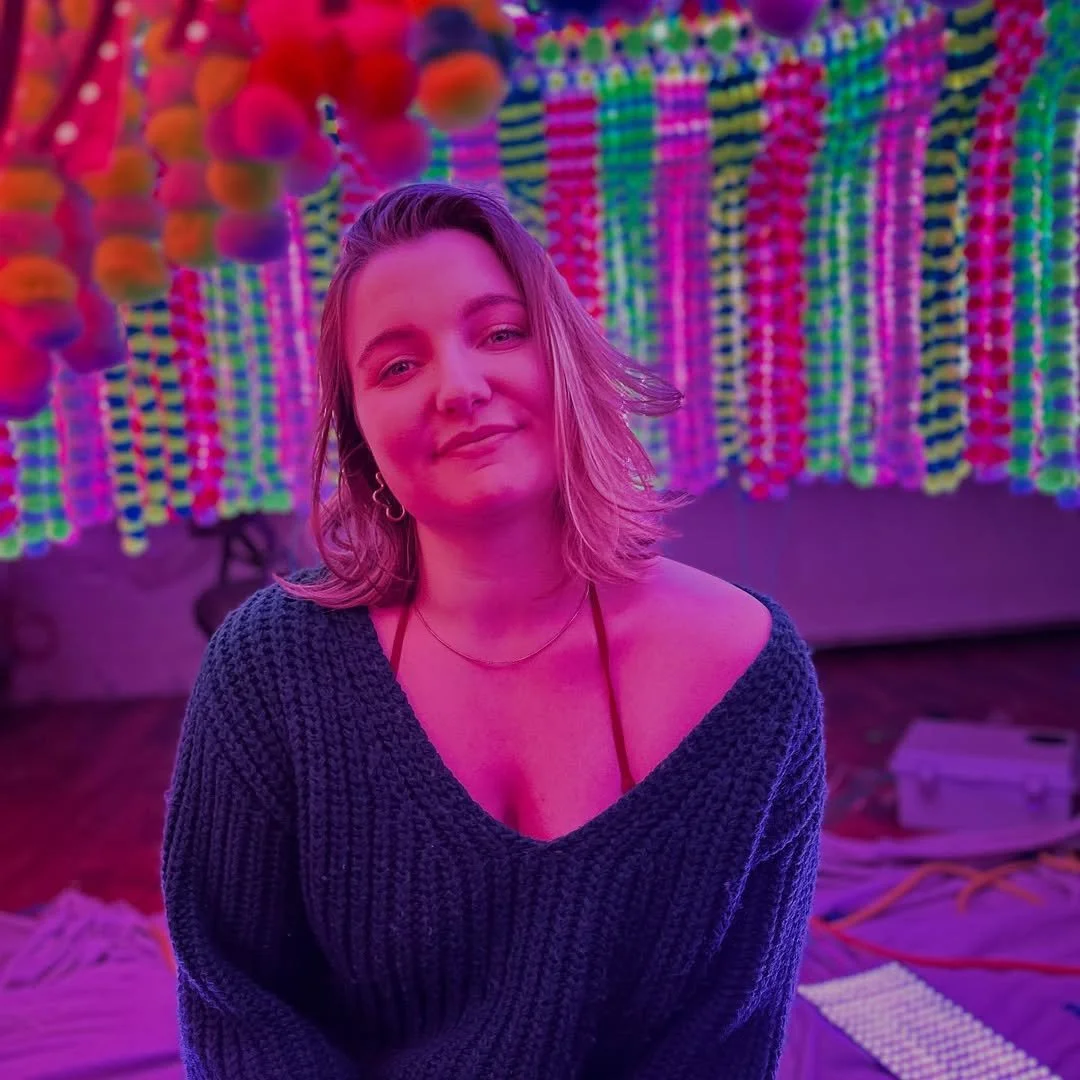A Conversation with Julia Barrett-Mitchell
Julia Barrett-Mitchell is the filmmaker behind "The Beautiful Nothing," an 11-minute documentary about Bobby Anspach featured in the "Everything is Change" exhibition at Newport Art Museum.
A Brooklyn-born, Beacon-based filmmaker and actor, Julia has directed 20 music videos since 2013 for notable New York musicians including Aaron Frazer, The Westerlies, and Rubblebucket. Her work has been published on NPR, VEVO and BBC. With an academic background in mythology and religious studies, Julia approaches her work as cinematic essays, creating visually rich narratives that explore spiritual depth and human connection—themes that naturally aligned with Bobby Anspach's transcendental artistic vision.
How did you first encounter Bobby's work?
When I moved to Beacon during the pandemic, I was nervous about finding artistic community outside New York City. Only a few months later, I was walking down Main Street and saw a pop-up in a previously boarded-up bank. I walked in and it was like walking into a temple - the ambiance was so reverent and quiet. It was one of Bobby's Continuous Eye Contact sculptures. I remember thinking, "Oh, cool things are happening here."
What drew you to want to make a film about Bobby?
After Bobby passed, I learned about the foundation and discovered layers to his story I hadn't known: his struggles with sobriety, his sobriety support groups, his consideration of becoming a Buddhist monk in Burma, and his mental health journey. It was like peeling an onion - there were more and more layers.
What really drew me to the story was finding out that he struggled with darkness privately but made the most bright, colorful, optimistic, whimsical work, which was intended to heal. Finding out that he needed that healing as much as anyone made the artwork even more meaningful - it was both his effort to heal humanity and himself.
Why did you title the film "The Beautiful Nothing"?
I took it from the name of Bobby's stop-motion film. I think that's the goal of the work - for people to tap into the beautiful nothing, which I understand as almost a Nirvana-level acceptance of the mind, self, and environment. In his writing, Bobby said, "What I'm offering is the disappearance of the self."
Trailer for The Beautiful Nothing, 2025.
What was your creative process like?
The hardest thing was sifting through dozens and dozens of hours of audio. Bobby recorded obsessive amounts - it's incredible because it makes clear he was documenting everything. I really wanted it to be in his words, so I was meticulously going through the audio to string together a narration.
I realized that in his writing, he said very succinctly what he was trying to do. So I turned to his writings - his thesis statements, poetry, letters applying to grad school. There was no beating around the bush about his intentions.
How did you handle using Bobby's voice in the film?
I used AI to generate Bobby's voice reading his own writings. My biggest intention was keeping everything in his words. I refused to put a single word in his mouth. There is no single word generated in the film that he did not write down himself. At most, I just cut sentences to make them clearer.
It felt bizarre and dystopian, but someone else wouldn't read it the same way, and his voice and tonality were so specific to who he was.
What did you discover about Bobby's true artistic vision?
Through Bobby's recordings, I found he was uncompromising about his message. In one memorable quote, he said: "If I were to present it in a sincere way, where it is gentle and kind and I pretend to be only kind, it might not make it in the art world, but it will probably make it very fucking well at Burning Man."
What I get from that is he's not messing around. This isn't just to look cool - it's supposed to be confrontational and push back against things, not just be a spectacle. He wanted it in places where the message would actually get through, where it'd be taken seriously.
How is the film structured?
There are four chapters that capture the key elements of Bobby's work:
Chapter 1: The meticulous iconographic techniques Bobby studied. The size of the pom-pom balls matter in these sculptures - they're not as chaotic as they look.
Chapter 2: His climate change activism and the concept of "the terrible something is destroying the beautiful nothing."
Chapter 3: His spiritual journey and consideration of becoming a monk.
Chapter 4: A recurring dream about drowning that became central to his thesis about the spectrum of bliss and suffering.
What was Bobby's deeper mission?
Bobby's work aims to "halt humanity in its tracks from this terrible, destructive, aggressive survival instinct, and find calmness." The terrible something is ego-driven aggression, and the goal is the beautiful nothing - peace and acceptance.
I see Bobby's story as a heroic journey - this ill-fated hero or warrior type wielding a weapon to fight for justice, but the weapon was pom-poms instead of a sword.
How has the film been received?
The response from Bobby's family and friends has been overwhelmingly positive. Some of his closest friends have seen it and said it was exactly like being with Bobby again. One of his best friends said "it was like being back there," which is the biggest compliment. It makes me trust that Bobby would be happy with it.
Bobby's parents have been incredible throughout the entire process - very trusting, kind, grateful, and happy with how it turned out.
What's next for this project?
I'm hoping to turn this film into a bigger film. I really want to make a narrative or mini-series of Bobby's story and get into other people's points of view and deeper layers. It's very early, but there's definitely interest in exploring Bobby's story further.













